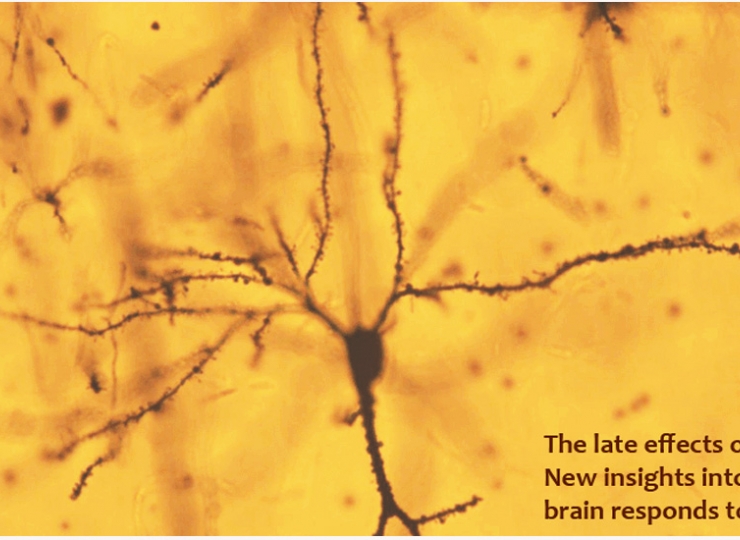By Anusha Krishnan
When the body’s army, its immune system begins to go rogue, disaster ensues. The double-edged sword of inflammation, which is the immune system’s first line of defense against infection, turns its destructive force onto the very body it is supposed to protect.
When short-lived, inflammation helps rid the body of pathogens such as bacteria and viruses. But sometimes, damaged cells in the body elicit an immune reaction that can be longer-lasting. Since these immune reactions happen in the absence of an infection, they are called ‘sterile inflammation’ and can cause chronic conditions such as osteoarthritis, rheumatoid arthritis, fibrosis and Crohn’s disease.
In a recent study, scientists from the Institute for Stem Cell Biology and Regenerative Medicine (inStem), Bangalore, have gained new insights into how sterile inflammation can develop.
Srikala Raghavan and her team have studied how the loss of a protein called beta integrin 1 from skin cells can cause a wide-spread inflammatory reaction without the presence of attacking pathogens. In addition, a collaborative effort with Praveen Vemula’s group has led to the development and testing of a new drug delivery system to combat chronic inflammation.
Beta integrin 1 is an essential protein on the cell surface that is involved in regulating cell shape, movement and cell division. Raghavan’s team show that the loss of this molecule in the skin cells of mice results in a massive cascade of inflammatory signals that begin to recruit large numbers of immune cells. These events eventually distort the skin’s basement membrane, the tough, flexible matrix to which skin cells are anchored. However, despite widespread disarray in the basement membrane, the skin barrier remains intact.
“What’s really unique about our model is that barrier formation is completely intact in our animals –. But they still mount a strong immune response, suggesting that the source of the inflammatory response is not external” says Raghavan pointing out that this makes the system an ideal model to study sterile inflammation. While tracing the stream of inflammatory signals, the study also proves that integrin beta 1 loss triggers an immune response very different from allergy-mediated inflammation. Macrophages and T-cells recruited to the skin begin to steadily degrade the skin matrix causing extensive disorder in the basement membrane.
“Working from the point when integrin beta 1 was lost, we were able to figure out a mechanism that underlies this inflammatory response. By giving anti-inflammatory treatment up and down the pathway we discovered, we could mitigate tissue damage,” says Raghavan.
However, the immune reaction and inflammation in such mice begins to build up while they are still developing embryos in the mother. Therefore, treating the inflammation with drugs was a big challenge.
“We took up the challenge of developing a very localised drug delivery vehicle,” says Praveen Vemula. “We needed to deliver the drugs transdermally, that is, into the skin,” he adds. This is where Vemula’s expertise in biomaterials came into play.
“Typically, cationic molecules – those with a positive charge – fuse with skin and can deliver cargoes inside skin. That is why we used a cationic lipid-based delivery system,” says Vemula.
Srujan Marepally, in Vemula’s group team had to develop two different types of drug delivery systems. One was a cationic liposome to carry small-molecule drugs, whereas the other was a catioinic lipid nanoparticle to carry antibodies. Another condition the delivery systems had to meet was slow release of the carried drug over a period of several days.
“What was really exciting was the efficiency of the drug delivery. We were, of course, hoping it would work, but we expected only about 10 to 20% drug delivery. The efficiency was so high, that the results of the drug treatment were plainly visible, which was a surprise,” says Vemula.
The results obtained by Raghavan’s and Vemula’s groups have been published as a paper in the journal Cell Reports. The lead authors of this publication, Ambika Kurbet and Samarth Hegde from Srikala’s team state that their work provides unique insights into the mechanisms of immune cell recruitment in inflammatory conditions. “Understanding these signals will be critical to developing targeted therapies for chronic inflammatory diseases like arthritis, Crohn’s disease and skin conditions like fibrosis, ,” they add.
“The super-collaborative environment at inStem has really helped with this work, especially the tie-up with Praveen. Our research facilities have been very supportive, helped us to do some really off-the-wall experiments,” says Raghavan. “This was really invaluable, especially since all of this happened in a relatively short time-frame,” she adds.
The research described in this article has been published as a paper titled “Sterile Inflammation Enhances ECM Degradation in Integrin β1 KO Embryonic Skin” in the journal Cell Reports in September 2016. The paper can be accessed here.












